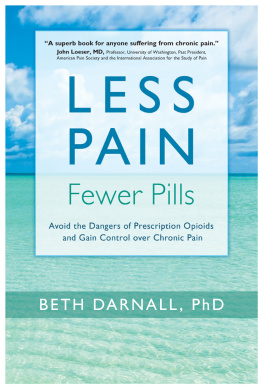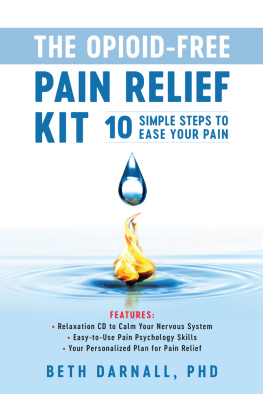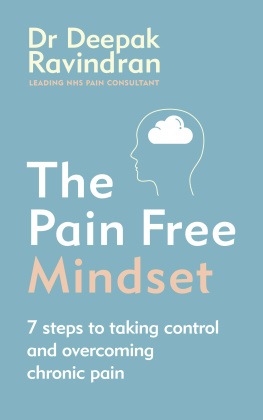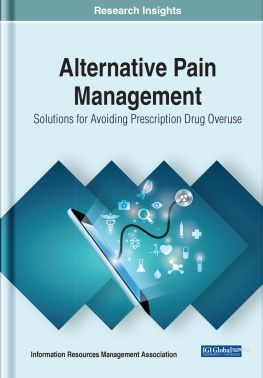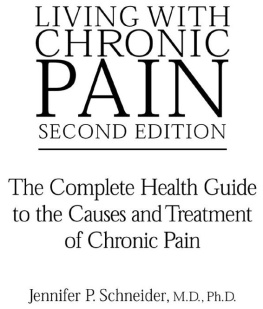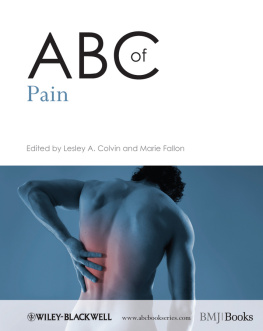Sparkling Praise for Less Pain, Fewer Pills
Dr. Darnall has written a superb book for anyone suffering from chronic pain who needs alternatives to opiate medication. She has provided detailed cognitive-behavioral strategies that the patient can utilize to gain control over chronic pain. She also fully depicts the risks of chronic opiate therapy. The knowledge and skills she acquired in over 15 years of treating chronic pain patients are the cornerstones of this book.
John Loeser, MD
Professor, University of Washington
Past President, American Pain Society and the
International Association for the Study of Pain
Dr. Darnall offers a refreshing approach to sensible opioid-use reduction by considering the real issues facing patients today. I was particularly impressed that she did not set out to criticize opioids as a class, but rather articulated the conundrums and associated risks that prescribers and patients alike should understand before considering opioids acutely and chronically. More importantly she recognizes opioid usefulness balanced against important psychological vulnerabilities and non-medication strategies. She simplifies many of the issues without placing blame on patients with persistent pain or on clinicians. Overall, this book will help patients and providers understand the how and why of opioid prescription benefits versus risks. The importance of recognizing vulnerabilities and appropriately stratifying them is discussed; this will enable the patient-reader to take control of their prescribed medications and seek professional help if required, rather than falling victim to opioids controlling the outcome.
Jeffrey Fudin, BS, PharmD, FCCA
Diplomate, American Academy of Pain Management
Owner & Managing Editor, PainDr.com & NovaPain Associates
Every person with chronic pain can benefit from self-empowerment and the opportunity to reduce the need for drugs or medications. Dr. Darnall offers a critical review of chronic pain management and a thoughtful and pragmatic approach to self-empowerment and to living with chronic pain in a manner that promotes as much personal wellbeing as is possible, ideally with fewer drugs and less pain.
Philip Pizzo, MD
Former Dean and the David and Susan Heckerman Professor,
Stanford University School of Medicine
Pain is a difficult symptom that is often over-treated by opioids, which in themselves lower the quality of life. This book gives great real-world examples and tips on how to avoid this vicious cycle. Beth Darnall is a leading expert in her field and has helped thousands of people with pain.
Kate Lorig, DrPH
Director and Professor Emeritus, Patient Education Research
Center in the School of Medicine, Stanford University
This book is a wonderful guide to help those suffering from chronic pain to not only understand the pitfalls of long-term opioid use, but more importantly to return to good health and everyday life activities. Dr. Beth Darnalls Less Pain, Fewer Pills offers readable and understandable advice to manage pain successfully while avoiding ineffective and harmful treatments, especially with opioids. For those suffering from unrelenting chronic pain, here is the guide that will make a difference.
Steven D. Feinberg, MD, MPH
Board Certified, Physical Medicine & Rehabilitation
Board Certified, American Board of Pain Medicine
Past-President of the American Academy of Pain Medicine
What we forget is that opioids dont simply dampen pain, they dampen everythingjoy, energy, memory, social interactions, personality, life itself. If you want to fully experience life, you caneven if you have chronic pain but not if you let opioids rule. Read this book and learn how to take back what you may have lost.
Jane C. Ballantyne, MD
Professor of Education and Research; Director of the Pain Fellowship
University of Washington
Dr. Darnall writes clearly and with empathy, and her balanced approach will help anyone struggling with chronic pain. This book provides patients with the tools they need to take back control of their pain and their lives without having to rely on pain medications.
Roger Chou, MD
Associate Professor of Medicine, Oregon Health & Science University
Dr. Darnall has created a book that eloquently articulates the perils of relying exclusively on opioids for the management of chronic pain. Through case studies and a very readable review of the scientific evidence, she makes a compelling case for utilizing non-opioids and behavioral therapies to manage ongoing pain. While this book is wholly accessible to lay readers, I would strongly encourage our medical colleagues, particularly those with substantial populations of pain patients to read this volume and to recommend it to their own patients and colleagues.
Robert Paul Cowan, MD, FAAN
Professor of Neurology, Stanford University School of Medicine
Director, Stanford Headache Program
Dr. Darnalls new book provides a refreshing approach to reduce reliance on prescription opioids for chronic pain. The book not only provides an accurate description of the problems related to long-term opioid useit also presents an effective, step-by-step approach to eliminate the use of prescription opioids.
Michael W. Hooten, MD
Division of Pain Medicine,
Mayo Clinic, Rochester, Minnesota
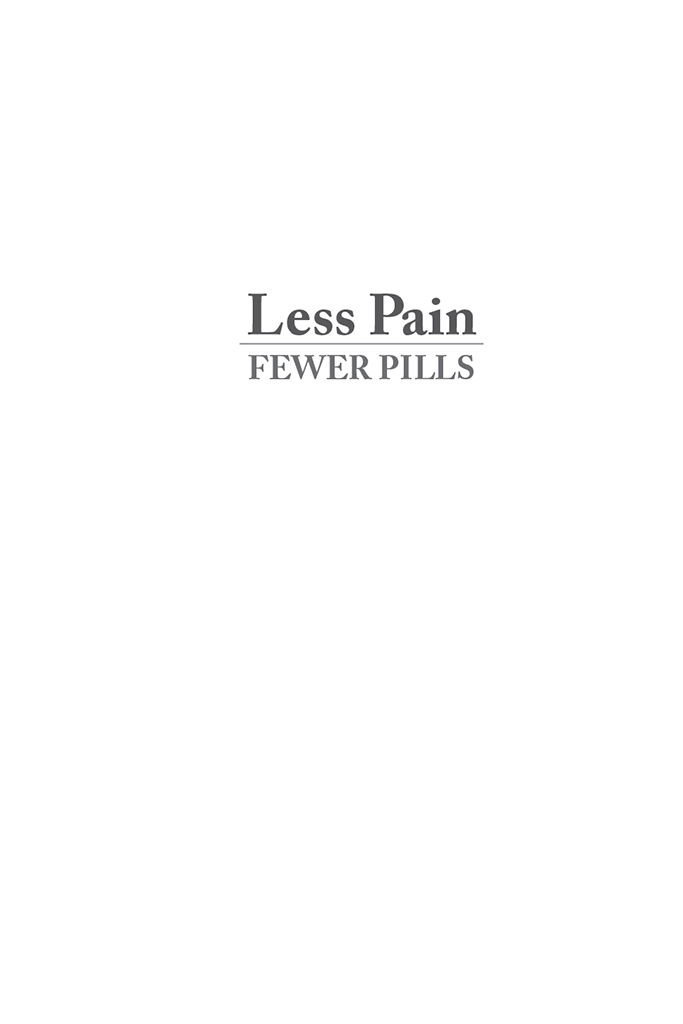

Copyright 2014 by Bull Publishing Company
All rights reserved. No part of this publication may be reproduced, distributed, or transmitted in any form or by any means, including photocopying, recording, or other electronic or mechanical methods, without the prior written permission of the publisher, except in the case of brief quotations embodied in critical reviews and certain other noncommercial uses permitted by copyright law.
Bull Publishing Company
P.O. Box 1377
Boulder, CO USA 80306
www.bullpub.com
Library of Congress Cataloging-in-Publication Data
Darnall, Beth.
Less pain, fewer pills : avoid the dangers of prescription opioids and gain control over chronic pain / Beth Darnall, PhD.
pages cm
Summary: For sufferers of chronic pain, the author provides the best chronic pain treatment options that work over time and carry the least risk. This book gives the information and tools needed to meet this challenge-- to take responsibility for and proactively manage your own pain on your own terms for the rest of your life-- Provided by publisher.
ISBN 978-1-936693-58-0 (paperback)
1. Chronic pain--Alternative medicine--Popular works. 2. Self-care, Health--Popular works. I. Title.
RB127.D39 2014
616.0472--dc23
2014013064
Printed in U.S.A.
22 21 20 19 18 10 9 8 7 6 5 4 3
Interior design and production by Dovetail Publishing Services
Cover design and production by Shannon Bodie, Lightbourne, Inc.
Preface
At least 100 million Americansor about one-third of the populationsuffer from chronic, often debilitating pain. Its a surprising statistic and its directly related to the widespread overprescribing of drugs such as Vicodin, oxycodone, and other potentially harmful pain medications.
Prior to the 1990s, opioid medications (Vicodin and oxycodone being the most well-known examples) were mostly used to treat short-term pain as a consequence of surgery, injury, or the pain caused by cancer. Typically, these pain relief medications were not recommended to treat chronic pain that extended beyond a 90-day period.
Next page
